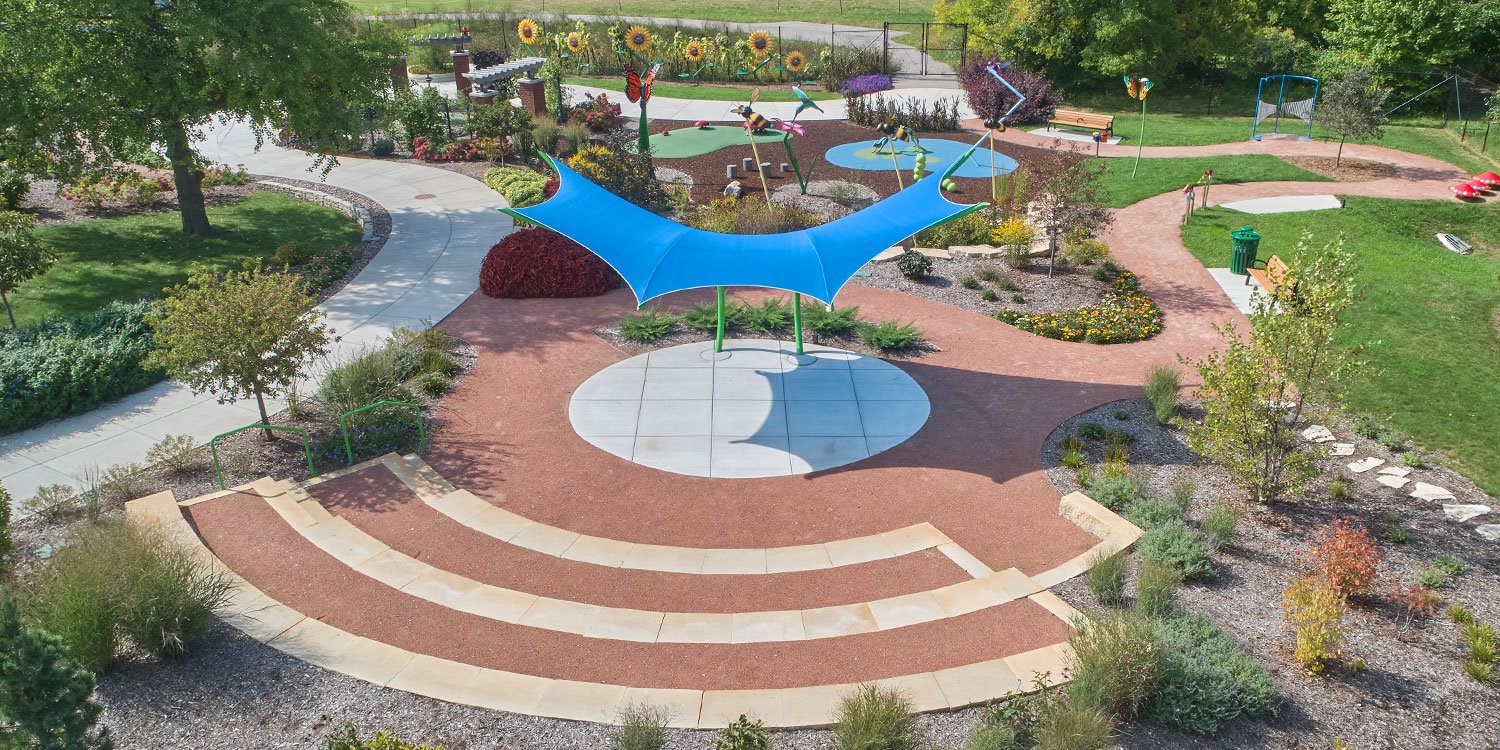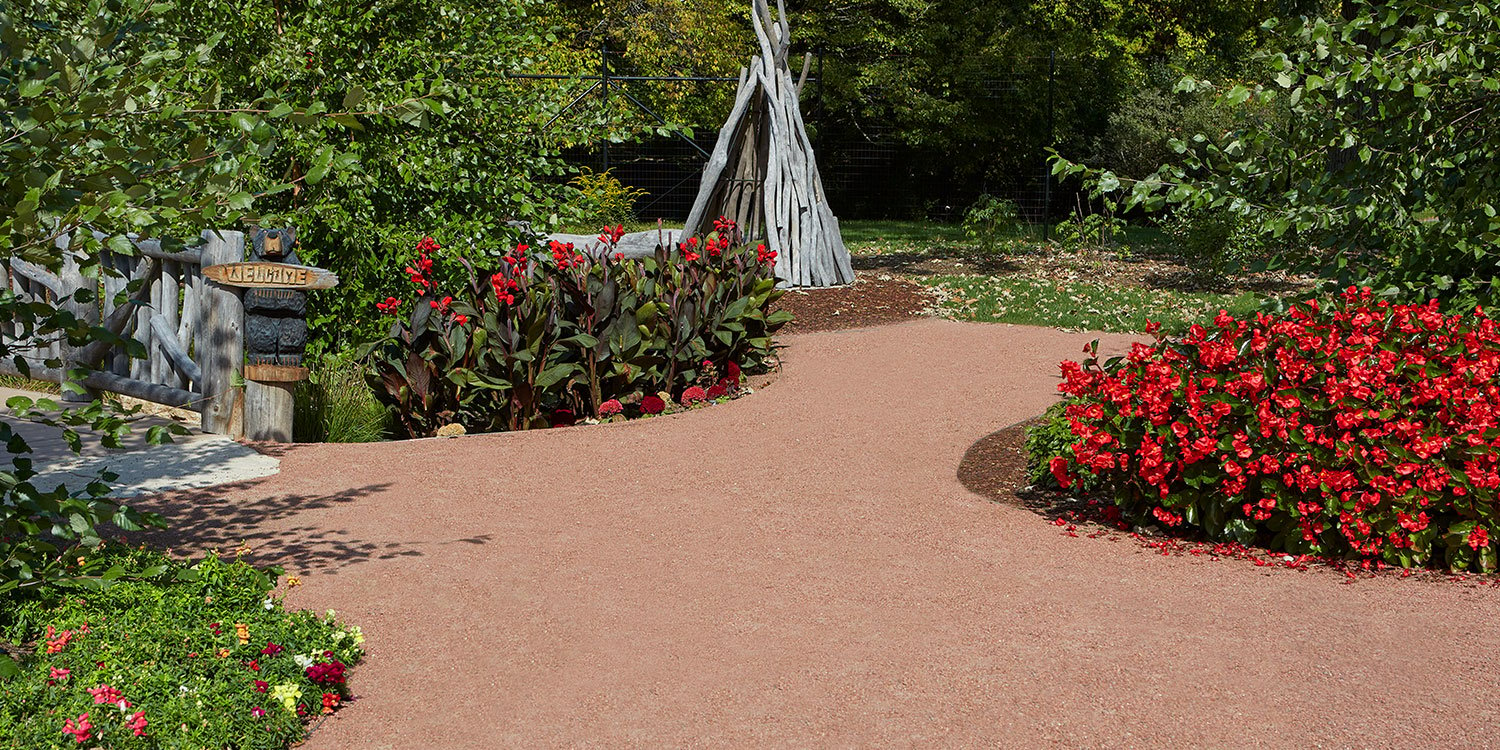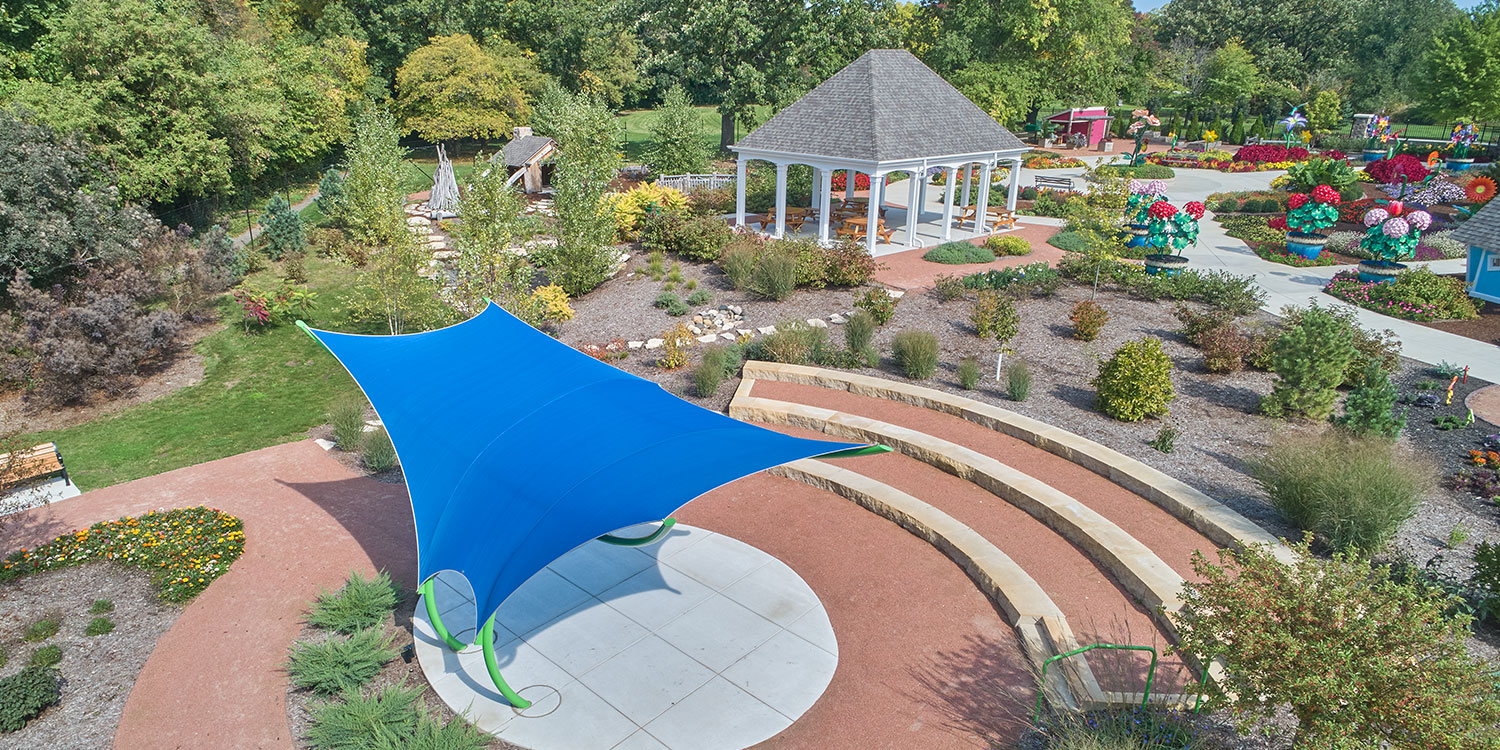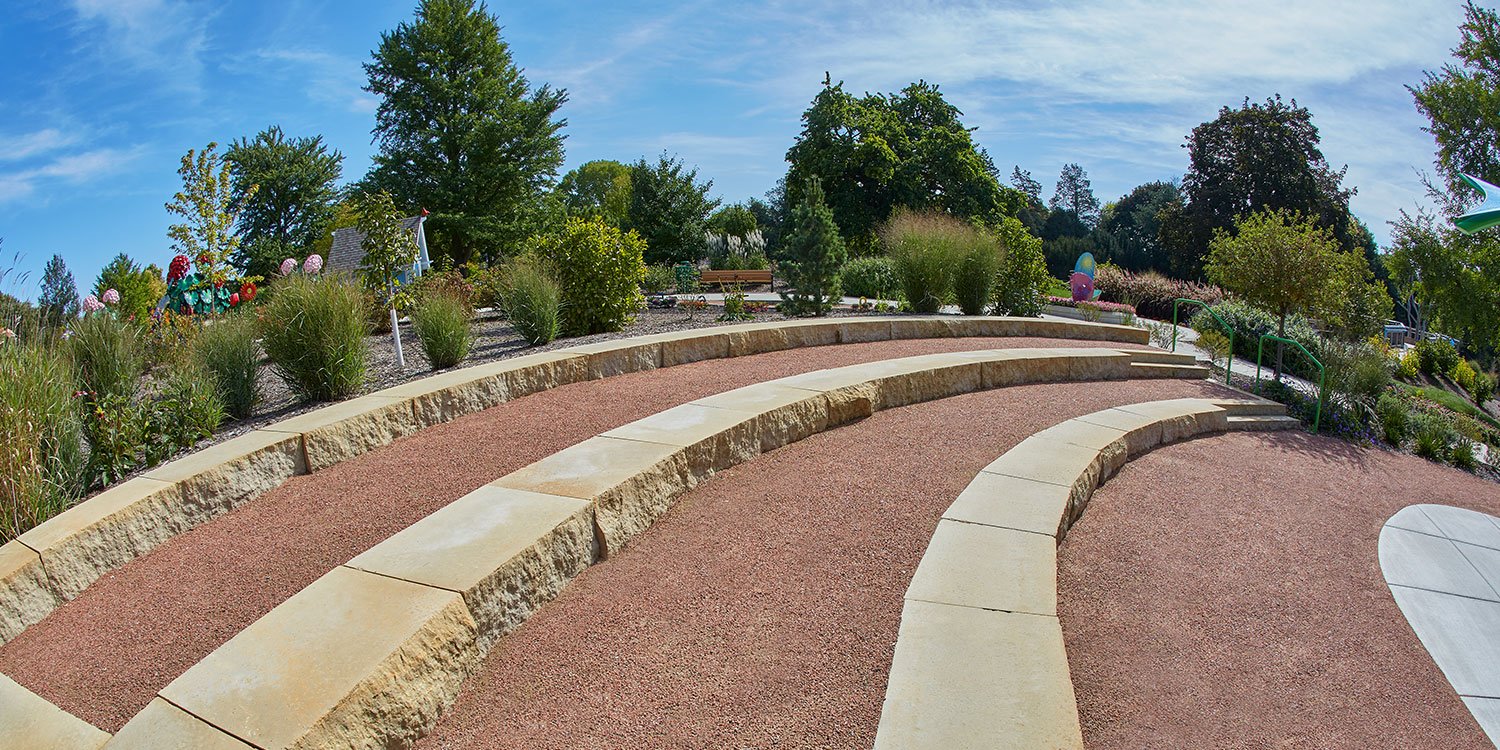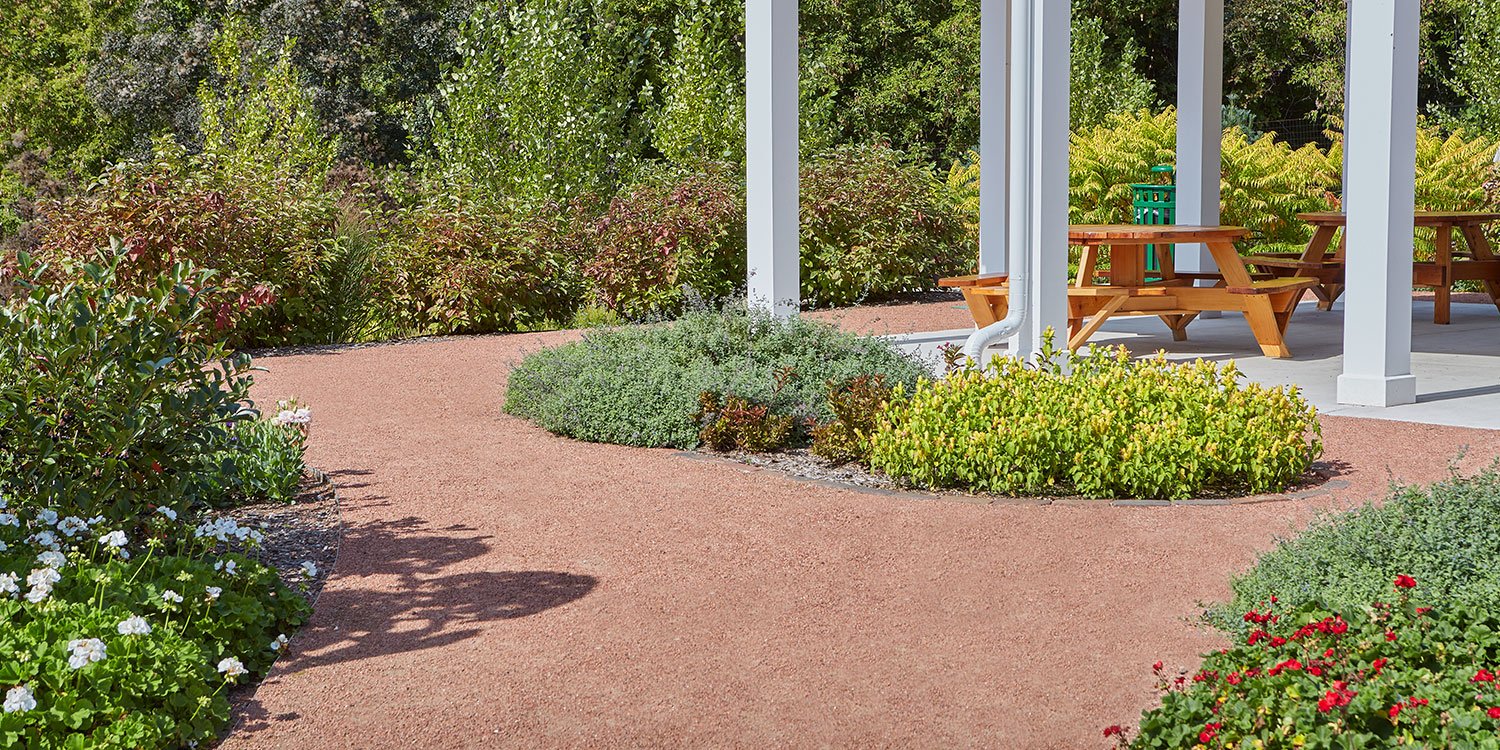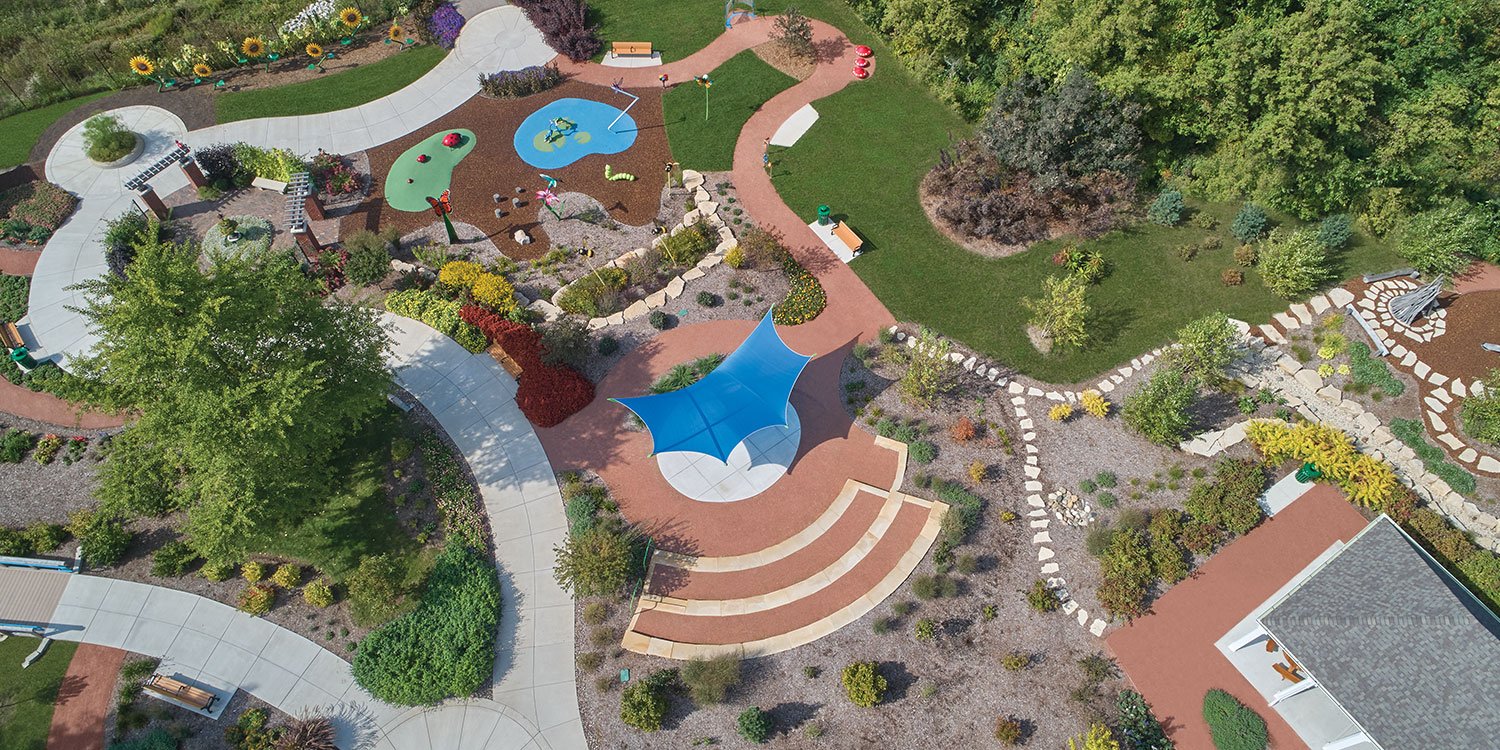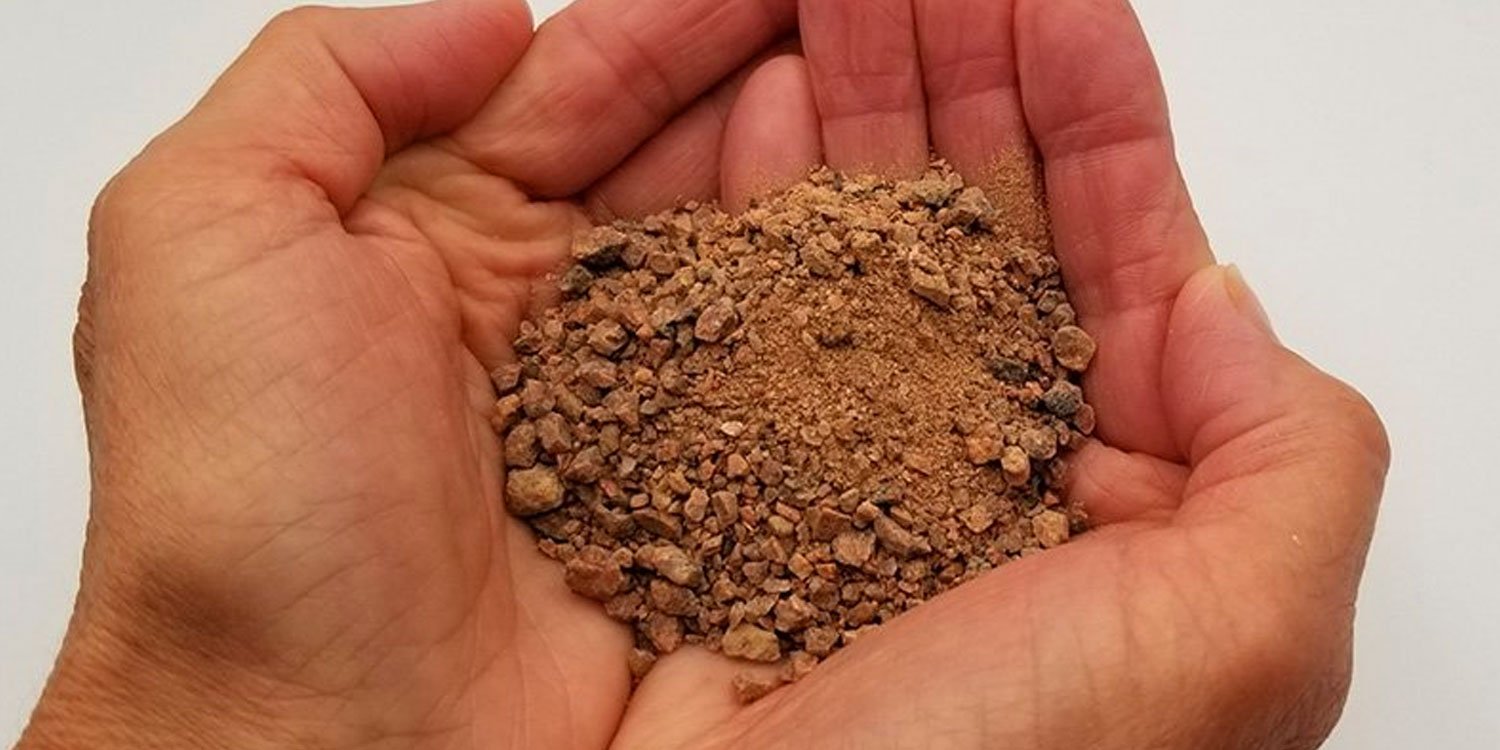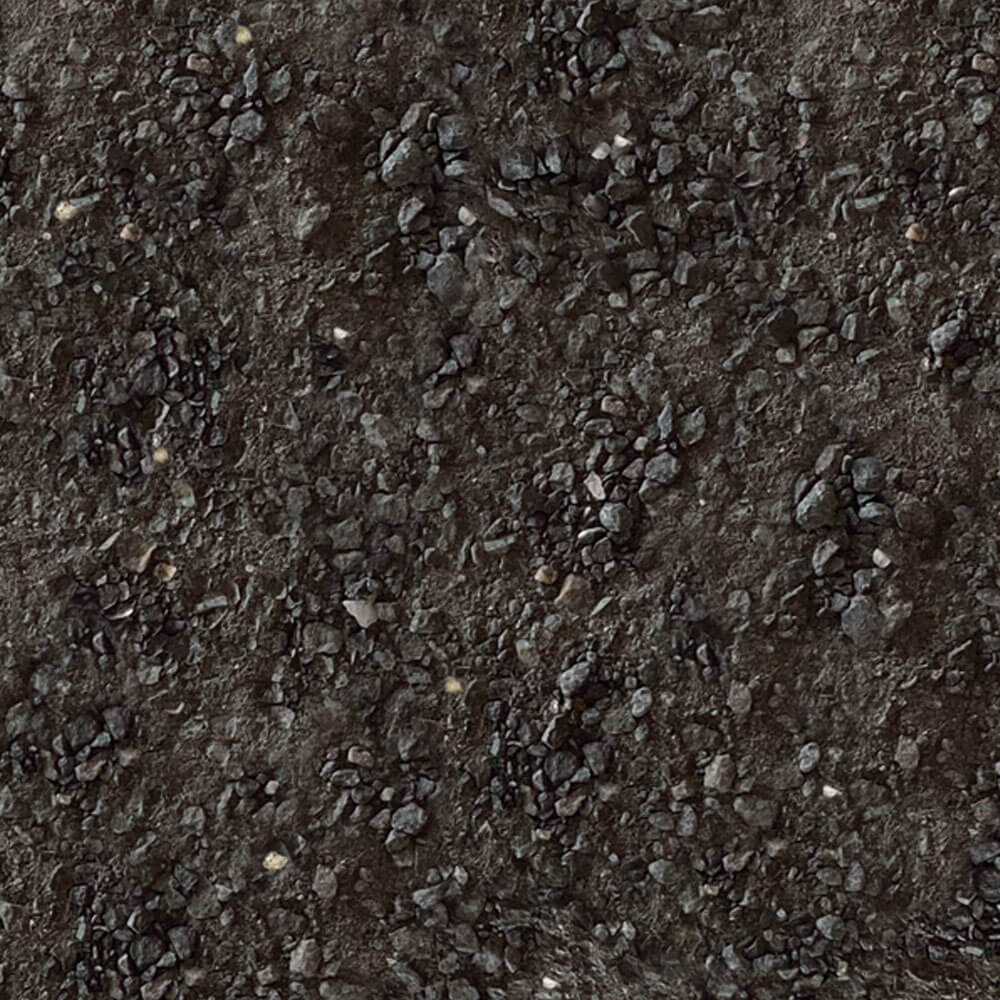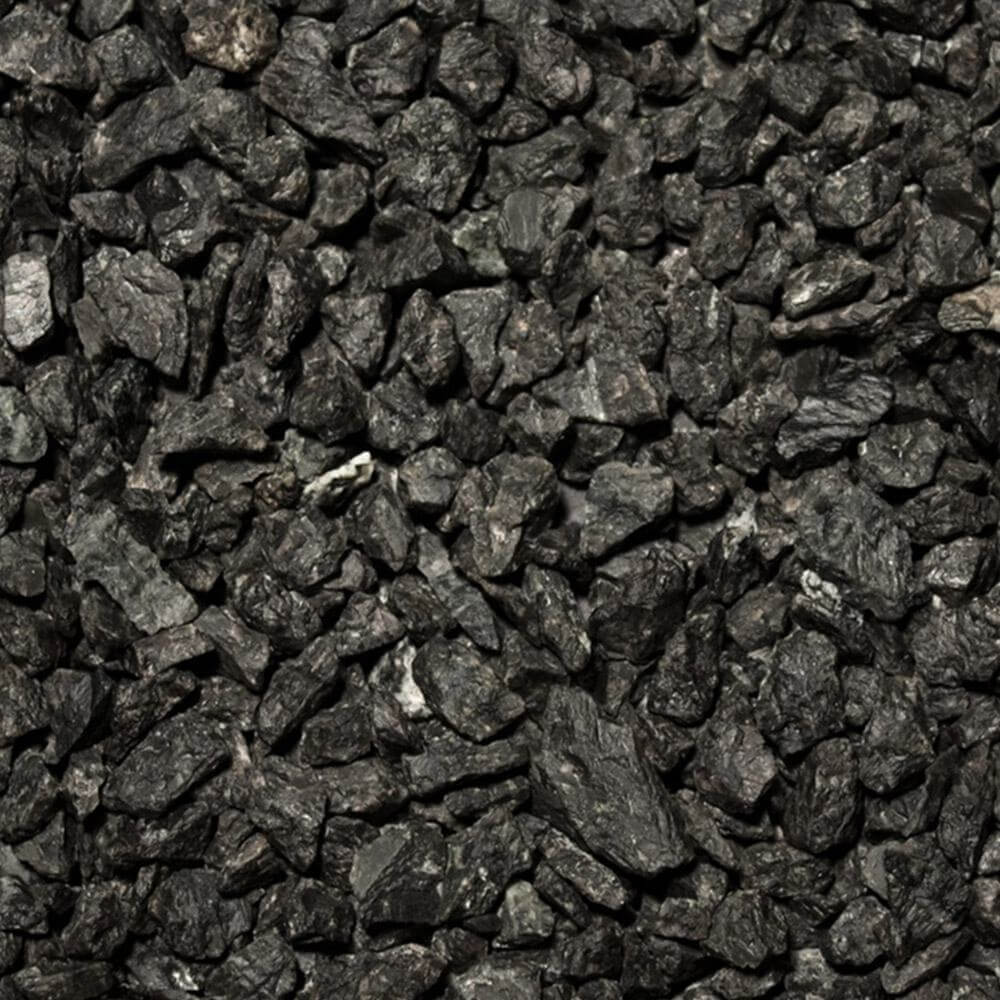Educational Pathways
Guiding Stakeholder Engagement in Margie’s Garden
Margie’s Garden, built in memory of local teacher Margaret Kezman, is the children’s addition to the Boerner Botanical Gardens at Whitnall Park in Hales Corners, Wisconsin. The garden is uniquely designed for children and their families, offering an environment that encourages exploration, imagination, and interaction with nature.
Project Location: Hales Corners, Wisconsin, United States
Project Completion Date: July 2022
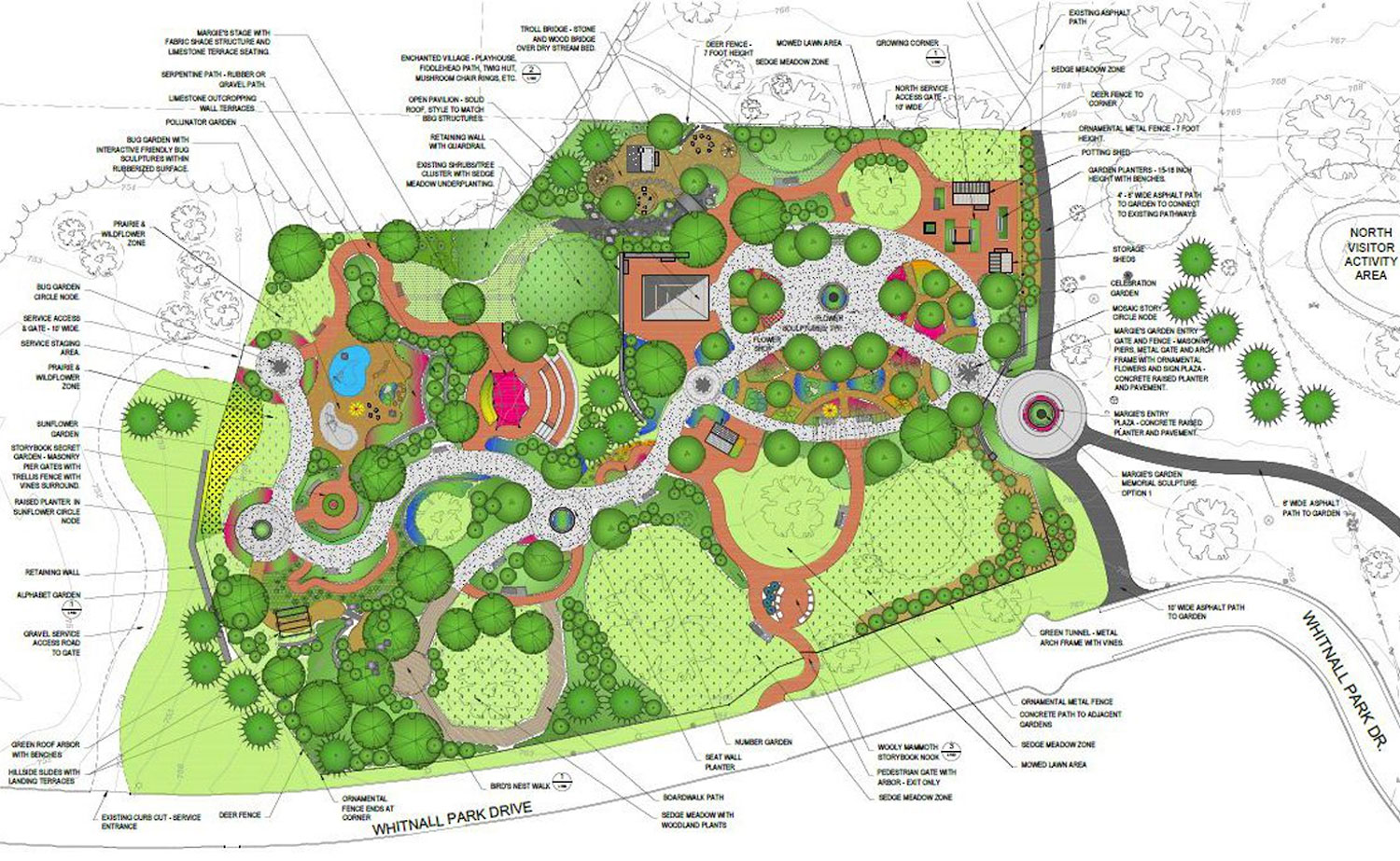
Image Courtesy of Milwaukee County Parks
Pathway Design Objectives
Designed by Milwaukee-based New Eden Landscape Architecture, Margie’s Garden carefully considers the movement patterns of children and families. The project demanded a pathway system that could blend seamlessly with the garden’s natural beauty, provide a stable and durable surface, require minimal maintenance, and withstand the traffic of numerous visitors with varying accessibility needs, including those using wheelchairs and strollers.
Surfacing Material Selection
Rosheen Styczinski from New Eden, reflecting on the design decisions for Margie’s Garden, highlighted a significant challenge in selecting appropriate surface materials for the varied functional areas within the project. According to Styczinski, “At Margie’s it’s a very concentrated space with a lot of circulation routes—we had to create a hierarchy of walkways.”
This need led to a strategic categorization of surface materials to fulfill distinct roles:
Primary Circulation Routes
Concrete was deemed most appropriate for the main avenues, which needed to provide emergency access and accommodate service vehicle traffic with specific turning radii.
High-Activity Play Areas
Shredded bonded rubber was selected for areas frequented by children, prioritizing safety and accessibility. This material’s cushioning properties make it ideal for high-volume play zones, enhancing user safety and comfort.
Naturalistic and Aesthetic Zones
Organic-Lock Stabilized Aggregate (OLSA), supplied by Kafka Granite, was specifically chosen for areas such as the amphitheater, pavilion, and winding paths. The selection was made to harmonize with the natural aesthetics of the garden, providing an unbroken visual and functional flow throughout the landscape. The natural color and texture of OLSA reflect the garden’s ethos, blending seamlessly with the surrounding botanical features.
Stabilized Aggregate
The selection of stabilized aggregate initially met with some resistance. “Stabilized aggregate was the most controversial material introduced to the project,” Styczinski remarked. Despite initial preferences from the ownership for widespread rubber surfacing, New Eden advocated for the use of stabilized aggregate pathways, arguing they offered a more cost-effective and aesthetically appropriate option for integrating into the broader landscape of Boerner Botanical Gardens.
Educational and Supportive Approach
The ownership team’s initial perception of aggregate pathways was that they would be difficult to maintain. New Eden’s approach to getting buy-in was to provide education and support throughout, particularly in communicating performance expectations and long-term benefits. This approach facilitated a shift in perception among the stakeholders regarding the practicality and sustainability of stabilized aggregate pathways.
Material Specifications and Supply
Chosen for its durability and natural appeal, Kafka Granite’s Rustic Granite Stabilized Pathway Material was specified for Margie’s Garden. This granite material, crushed to a ¼” minus size with an even gradation, allows for optimal compaction, providing a stable yet permeable surface. The granite aggregate is bound with Organic-Lock, a patented plant-based binder supplied by licensed dealers throughout the USA who blend it with approved aggregates. This blended aggregate combination creates a durable surface that naturally enhances the longevity of pathways by resisting erosion and wear while requiring less maintenance over time.
For Margie’s Garden, Kafka supplied approximately 132 tons of Rustic Granite Stabilized Pathway Material to cover around 6,500 square feet of pedestrian pathways.
Planning and Installation
The installation of Organic-Lock Stabilized Aggregate pathways was carefully planned and executed by Bluemel’s Garden & Landscape Center with assistance and oversight from Kafka Granite. Key considerations included proper base preparation, moisture management, and compaction to achieve a firm and resilient pathway surface.
This project was Bluemel’s first time working with OLSA. Incorporating OLSA into this project initially raised concerns among the Bluemel’s team due to their unfamiliarity with the product, particularly regarding the moisture management process.
Despite the initial learning curve, the product proved to be more user-friendly than anticipated. With accessible technical support and clear guidelines, the team quickly adapted to the nuances of working with OLSA. The forgiving nature of the material allowed for easy adjustments during installation, turning initial apprehension into a positive, hands-on learning experience. With Kafka Granite providing on-site support and guidance, Bluemel’s team swiftly adapted to the demands of working with OLSA. The material’s forgiving properties facilitated on-the-fly adjustments, ultimately transforming initial apprehension into a constructive learning experience.
As the project progressed under rising temperatures, the need for periodic water addition became apparent. Utilizing the park’s irrigation system, the Bluemel’s team efficiently managed the moisture content by integrating and blending water with the OLSA on a clean, paved surface and turning it over using a front-end loader. According to Bluemel’s, “The actual handling of the product—moving, spreading, and compacting—proved to be straight-forward.”
Kafka Granite’s proactive involvement was crucial, beginning with coordinating the delivery of their blended granite and extending through the installation phases. This support was vital given the tight timeline leading up to the garden’s grand opening just days after installation commenced. Kafka’s hands-on approach during the initial days ensured that everything from base inspection to final adjustments adhered to the highest standards, as highlighted by Jason Chilson from Kafka. “It was about getting in, getting our hands dirty, and showing support.”
The OLSA portion of the project concluded with Kafka Granite conducting a final walk-through to refine details, ensuring the pathways were ready for immediate public use. The resulting successful installation provided a traffic-ready, durable and stable surface for these visually striking pathways.
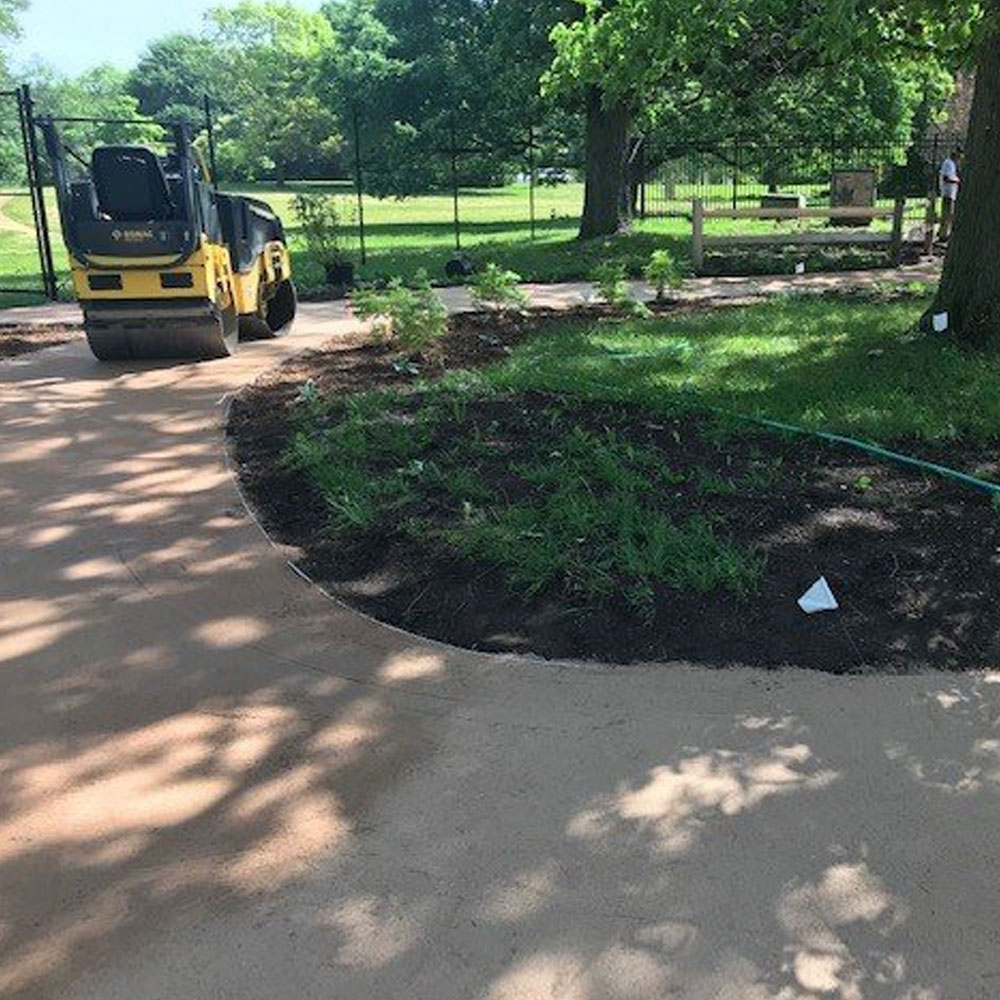
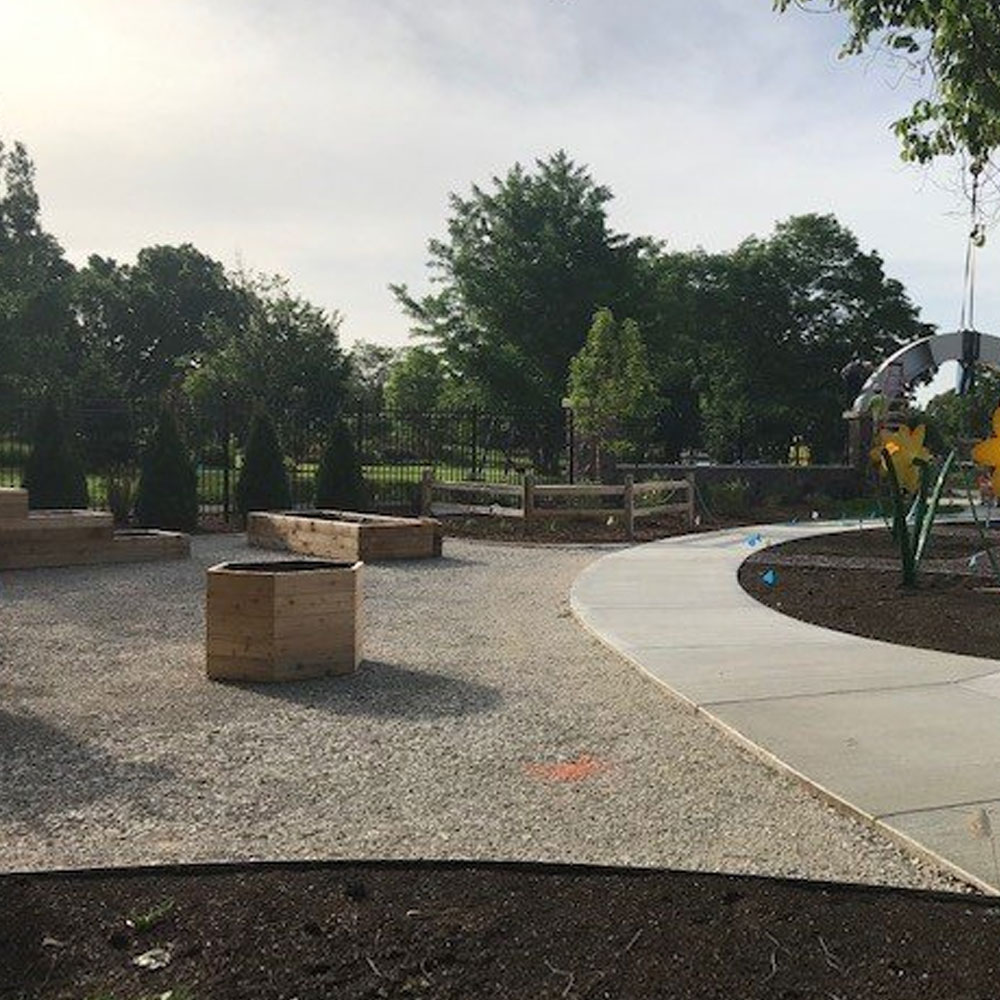
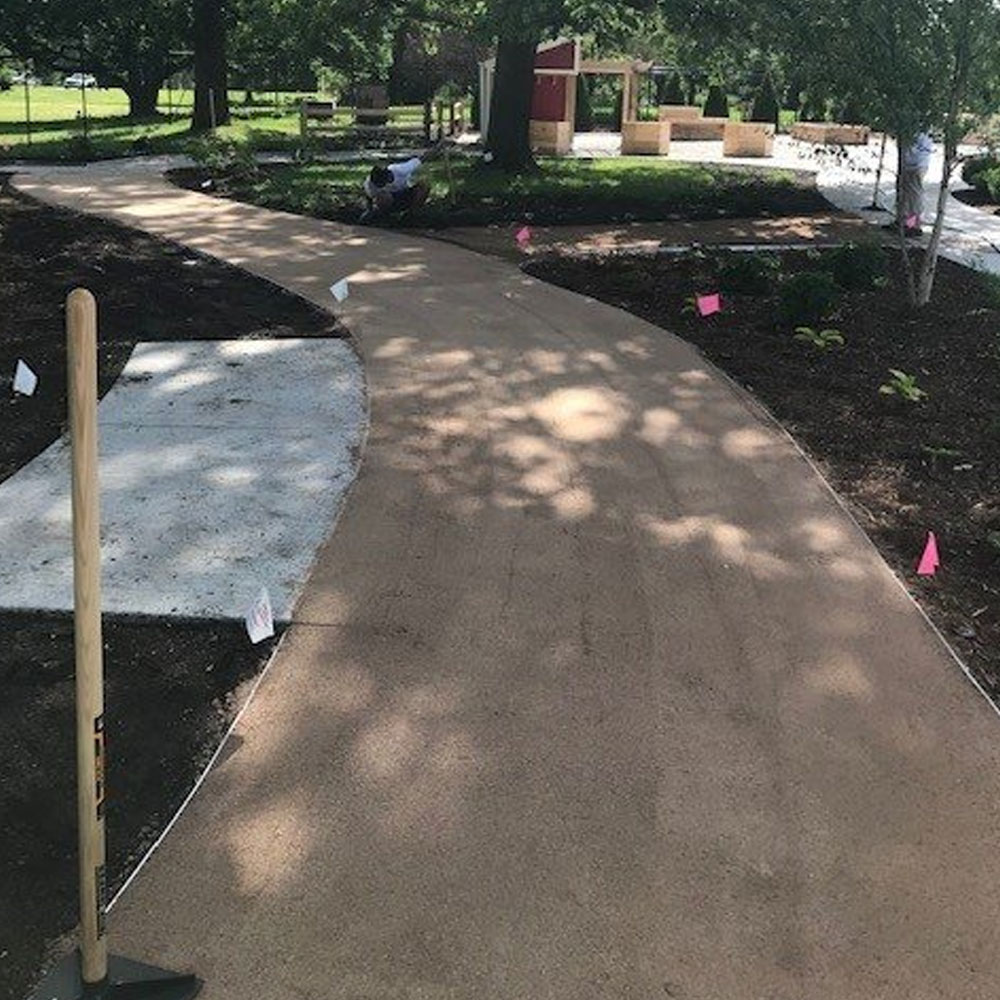
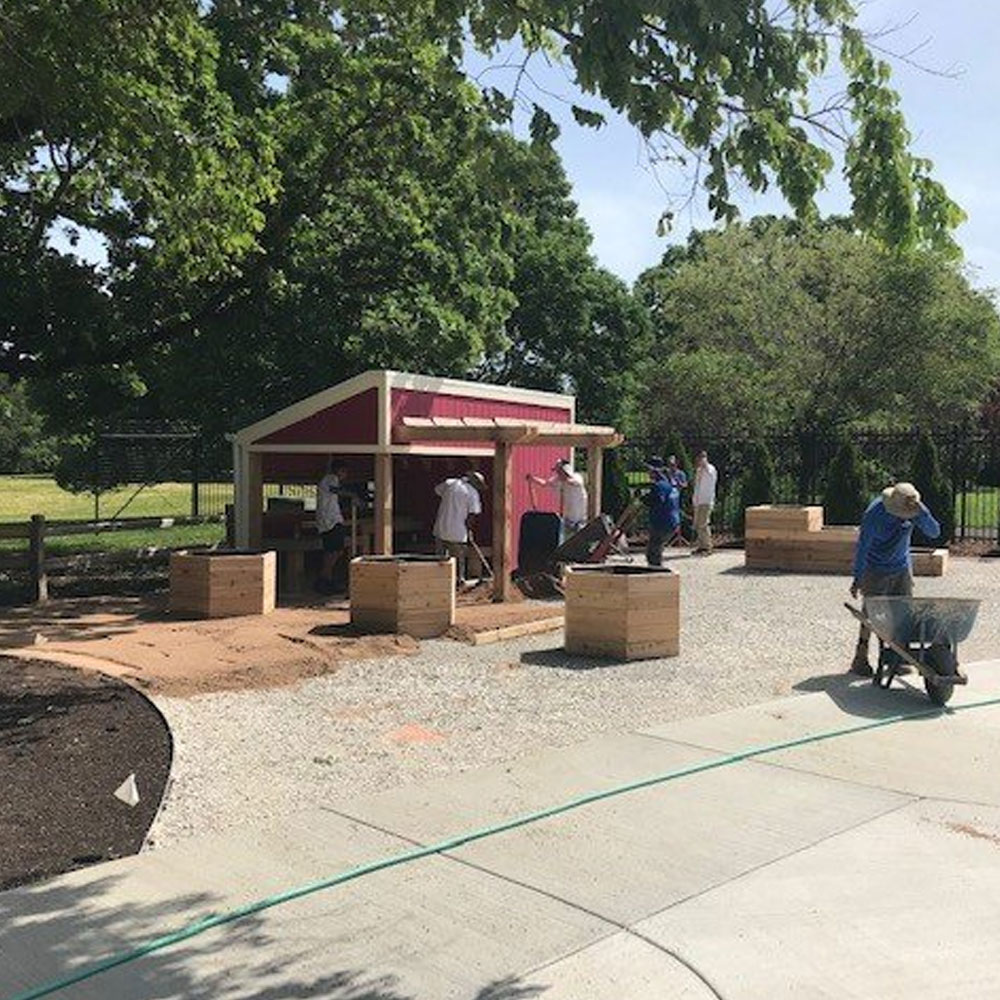
Post-Construction Project Support
The completion of construction did not signify the end of the project’s journey but rather the beginning of its lifecycle and ongoing management. Months following the project’s conclusion, Kafka Granite facilitated a comprehensive site review with the owner, who, despite initial skepticism, was ultimately pleased with how the project turned out. Jason Chilson from Kafka commented that, “Even after the fact, we follow up. We wanted the owner to be confident that the product was going to perform well and last, and that they had made the right decision.”
The Importance of Education and Setting Expectations
A pivotal challenge in the development of Margie’s Garden was aligning the overall expectations with the realities of long-term landscape management. Rosheen Styczinski from New Eden Landscape Architecture emphasizes the importance of “educating all the way through, every step of the way.” Educating stakeholders at every step – from owners to installation crews to maintenance personnel – is crucial for the long-term success of the project. The key to navigating this obstacle lay in educating the property owners about the expected performance and essential role of maintenance in sustaining the garden’s functionality and aesthetic appeal. Understanding the nuances of stabilized aggregate performance and expected maintenance requirements, for example, can pose challenges for those new to the material. While Organic-Lock Stabilized Aggregate (OLSA) significantly reduces maintenance demands due to its inherent strength and durability, it does not eliminate the need for periodic care. The project’s success hinged on clear communication regarding what maintenance would entail and the frequency it would require. It was crucial for the owners to understand that maintenance is an indispensable factor in any project’s longevity. Assumptions that outdoor surfaces are maintenance-free can lead to premature wear and failure, undermining the project’s objectives. Various independent factors, such as weather conditions and usage patterns, dictate the level and urgency of required maintenance.
Comprehensive Technical and Educational Support
The Organic-Lock team is dedicated to offering comprehensive technical support throughout projects—from design through installation and turn-over—including educational aspects for all parties involved. Establishing performance requirements, expectations, installation best practices, and maintenance considerations as early as possible in a project ensures that all stakeholders are aligned and fully prepared for successful project execution.
Matt Tabor, Technical Advisor at Organic-Lock, underscores the importance of early engagement. “The best thing you can do if you’re considering using OLSA for your surface choice is to let us know as early as possible in the project design phase.” Tabor goes on to explain that, “Our team has developed a comprehensive support system that follows the entire journey of the project to ensure expectations meet reality through proper design and education. If you visit our website, you can register a project and we’ll start a file, beginning our project support with our technical team reviewing specs and drawings to look for any limitations or potential improvements.”
Project Outcomes
The successful installation of Organic-Stabilized aggregate pathways throughout Margie’s Garden extends beyond its physical construction to the foundational role that stakeholder education and support played throughout the development process. From the outset, the project team recognized that the garden’s long-term success would hinge on thorough, transparent communication and active involvement of all stakeholders.
Through its winding paths that encourage exploration and its interactive spaces designed for play and rest, Margie’s Garden offers a sanctuary where children and families can connect with nature and each other in a meaningful way. It showcases how landscape architecture, engineering, and effective use of materials can play a critical role in creating environments that are beautiful, accessible, and educational, while also paying homage to individuals who have left a lasting impact on their community.
